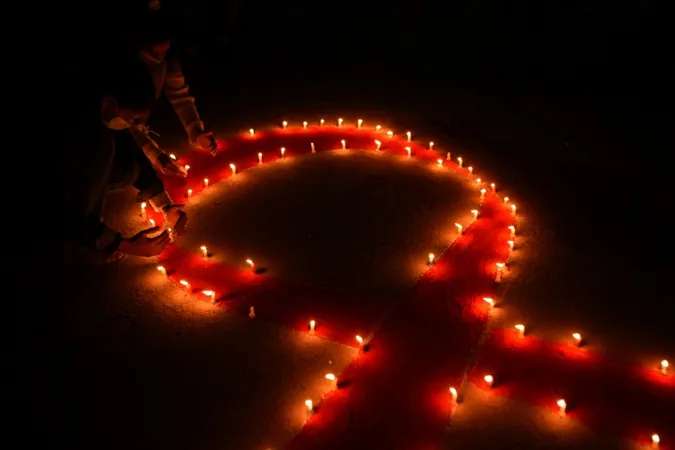
Global Fight Against HIV: Progress Made, But Challenges Remain!
2024-11-26
Author: Ling
Global Fight Against HIV: Progress Made, But Challenges Remain!
The battle against HIV/AIDS has reached a significant milestone, with a notable decline in new infections and deaths reported globally. However, health experts are urging caution as World AIDS Day approaches this Sunday, emphasizing that the fight is far from over.
A Decline, But Uneven Progress
A groundbreaking study published in The Lancet HIV journal reveals that during the 2010s, the world witnessed a substantial reduction in HIV infections by about 20%. Additionally, AIDS-related deaths dropped by nearly 40%, bringing the number below one million annually. Most of this progress can be attributed to advancements in sub-Saharan Africa, which has been the epicenter of the epidemic.
Nonetheless, not all regions are experiencing the same downward trend. Eastern Europe and the Middle East, for instance, have reported an increase in HIV cases, highlighting the urgent need for tailored interventions in these areas. Experts warn that the global community is still far from meeting the United Nations goal of virtually eliminating AIDS-related deaths by 2030.
Lead researcher Hmwe Kyu from the US Institute for Health Metrics and Evaluation stated, "While we celebrate this remarkable progress, it’s essential to remember that over a million individuals still acquire new HIV infections each year, and approximately 25% of the 40 million people living with HIV are not receiving necessary treatment."
Effective Tools in the Fight Against HIV
Preventive measures such as Pre-Exposure Prophylaxis (PrEP) have emerged as game-changers in HIV prevention. These daily pills can decrease the risk of acquiring HIV from sexual activity by an impressive 99%. Countries like France are taking proactive steps to broaden access to PrEP, aiming to make it available to anyone who needs it, not just to specific demographics like men who have sex with men.
For those already living with HIV, antiretroviral therapy (ART) has revolutionized treatment, often reducing the viral load to undetectable levels. This drastically lowers the chance of transmission, including during pregnancy, where the risk of mothers passing the virus to their babies becomes less than one percent.
New Hope with Lenacapavir
Recent advancements have brought new hope with the antiretroviral drug lenacapavir, which has shown 100% effectiveness in preventing HIV infection in early trials. The innovative aspect of lenacapavir is that it only requires administration twice a year, a significant improvement over daily pill regimens. Yet, concerns linger about accessibility, as Gilead, the pharmaceutical company behind the drug, charges around $40,000 annually in some markets.
Fortunately, Gilead has recently signed licensing agreements with six generic manufacturers to produce lenacapavir at a drastically reduced cost in lower-income countries. While this move has been met with enthusiasm, millions of HIV-positive individuals remain in regions not covered by these agreements.
Stigma and the Search for a Vaccine
One of the persistent challenges in HIV treatment is the stigma associated with the disease, which can deter individuals from seeking help. The promise of a twice-yearly injection could mitigate this issue by offering a more discreet treatment option.
Despite extensive research, an effective vaccine for HIV continues to elude scientists. However, researchers liken lenacapavir’s potential impact to that of a vaccine, providing an alternative means of prevention. Some patients have also been cured of HIV, but these instances are extremely rare and often involve complex procedures like stem cell transplants that are not feasible for the majority.
As the global community moves forward, it’s crucial to build on the successes of the past decade while addressing the disparities in treatment and prevention access to ensure that no one is left behind in the ongoing fight against HIV/AIDS.




 Brasil (PT)
Brasil (PT)
 Canada (EN)
Canada (EN)
 Chile (ES)
Chile (ES)
 España (ES)
España (ES)
 France (FR)
France (FR)
 Hong Kong (EN)
Hong Kong (EN)
 Italia (IT)
Italia (IT)
 日本 (JA)
日本 (JA)
 Magyarország (HU)
Magyarország (HU)
 Norge (NO)
Norge (NO)
 Polska (PL)
Polska (PL)
 Schweiz (DE)
Schweiz (DE)
 Singapore (EN)
Singapore (EN)
 Sverige (SV)
Sverige (SV)
 Suomi (FI)
Suomi (FI)
 Türkiye (TR)
Türkiye (TR)